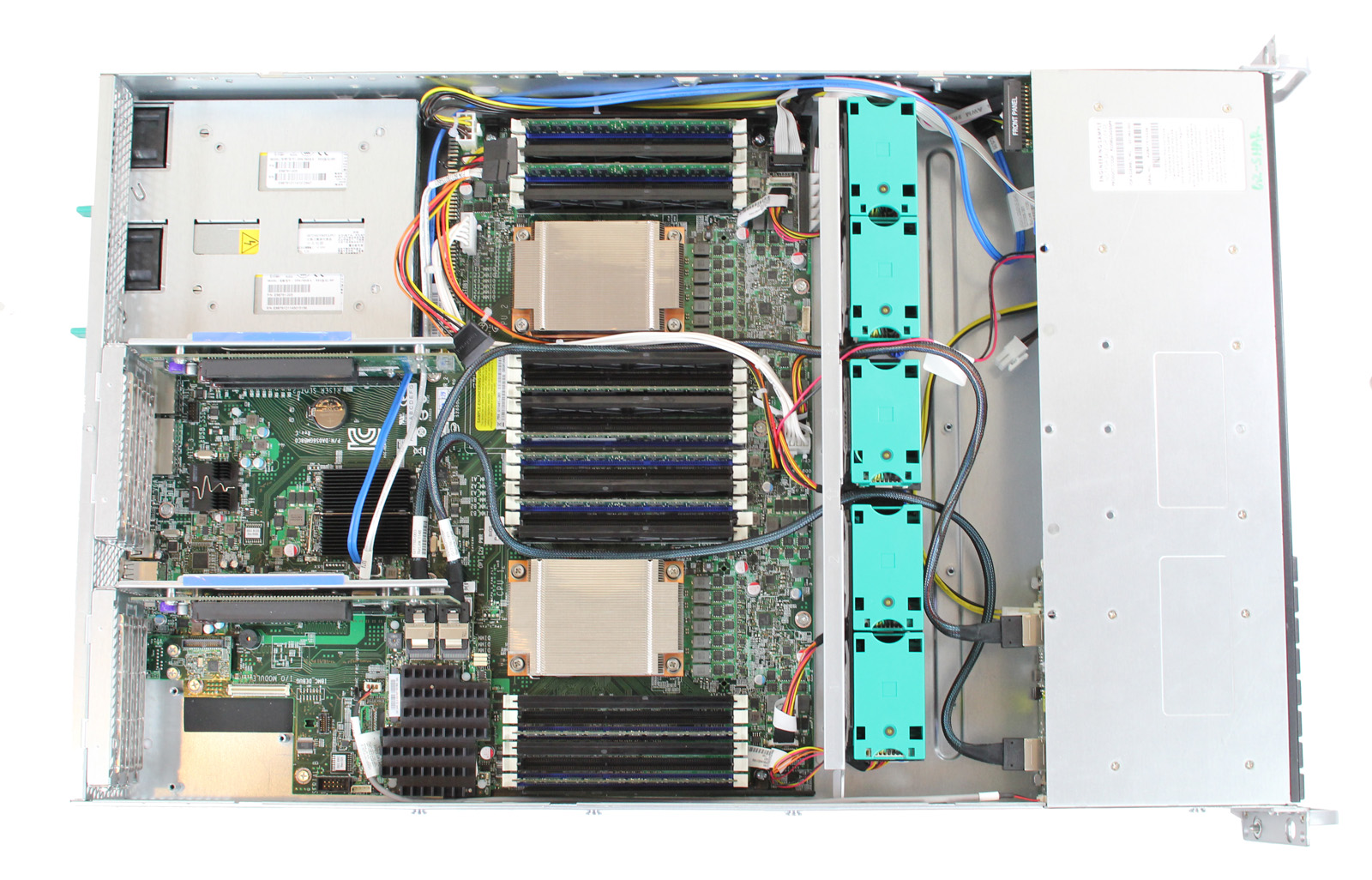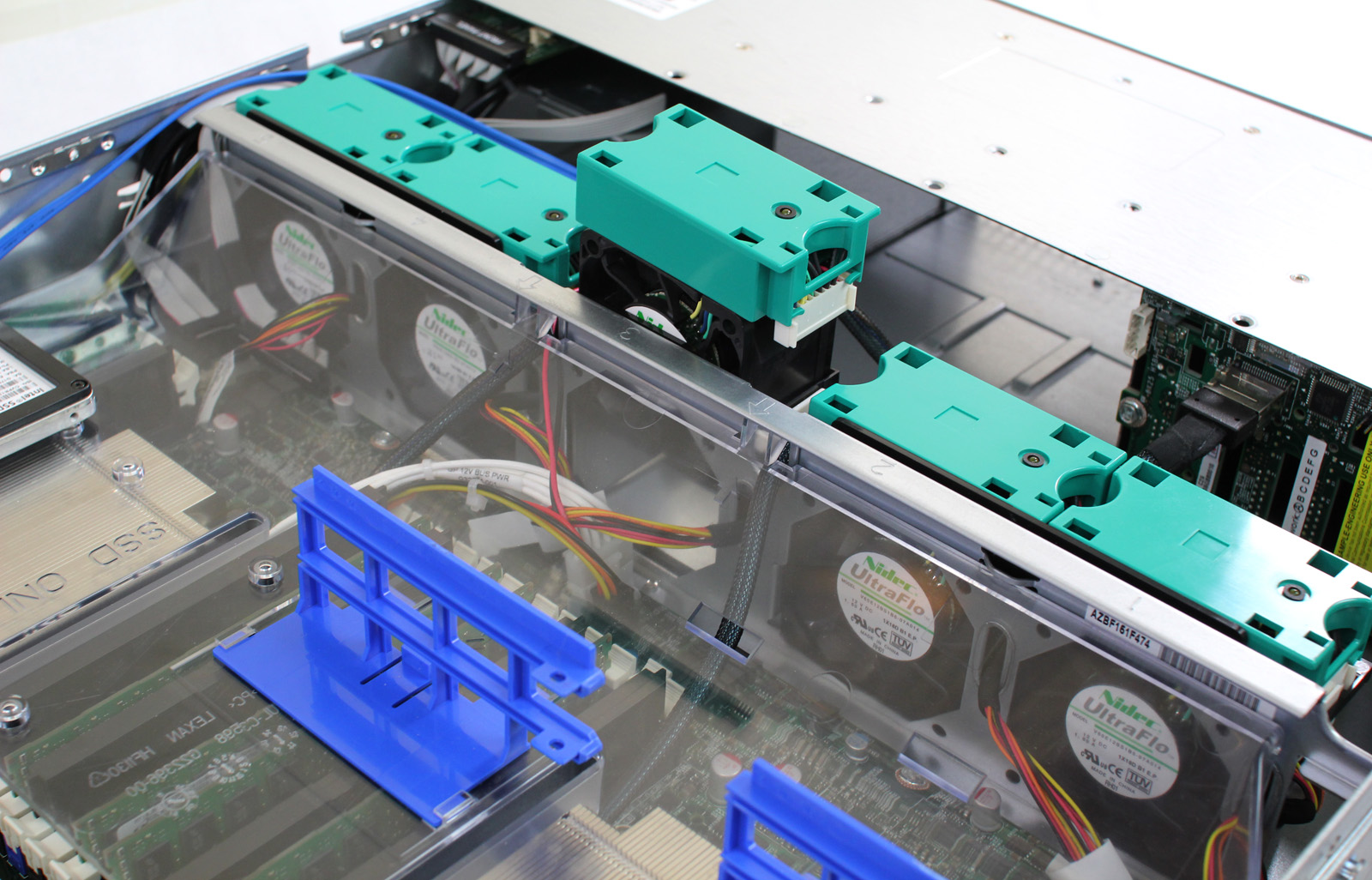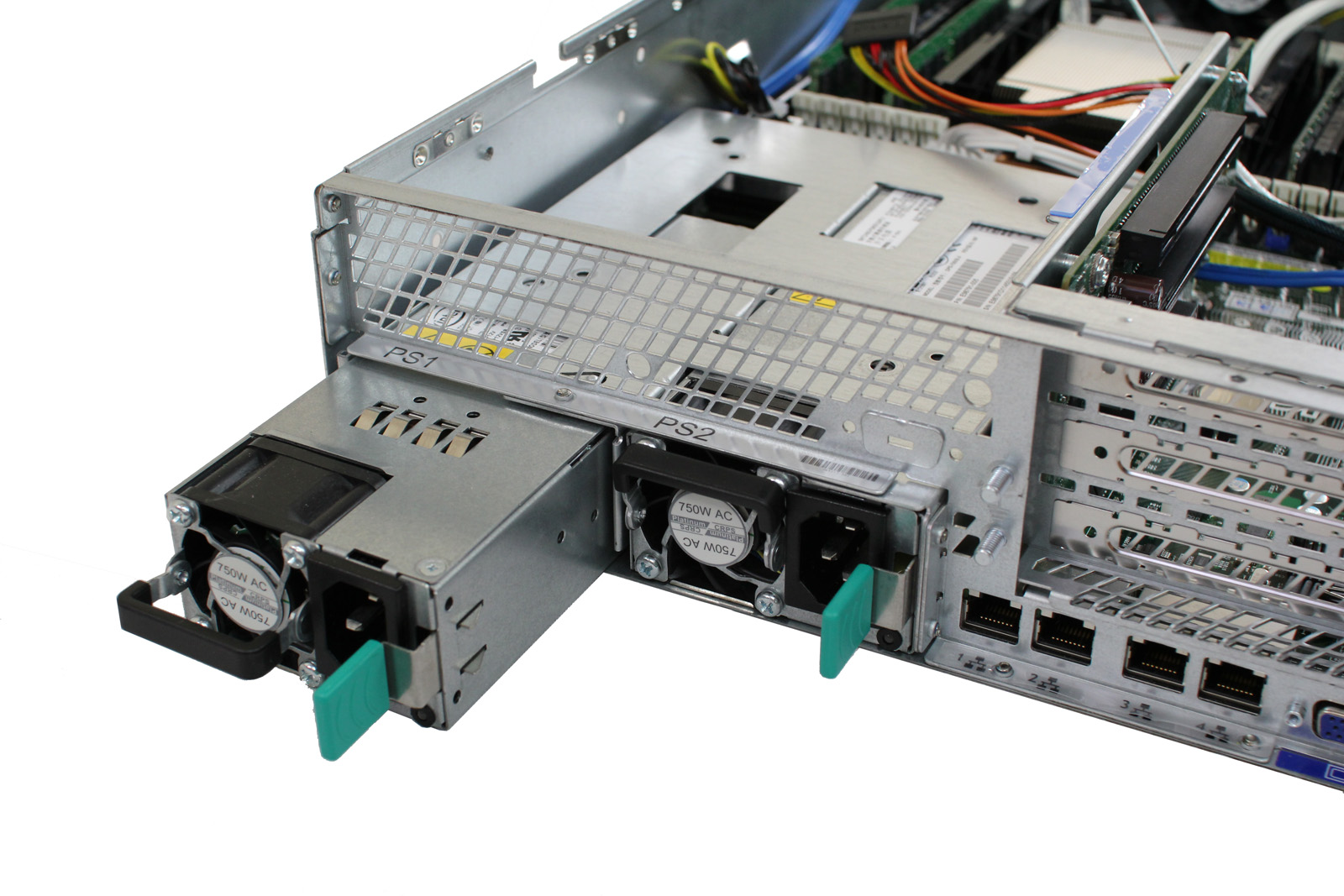Three Xeon E5 Server Systems From Intel, Tyan, And Supermicro
After taking a first look at Intel's Xeon E5 processors, we wanted to round up a handful of dual-socket barebones platforms to see which vendor sells the best match for Sandy Bridge-EP-based chips. Intel, Supermicro, and Tyan are here to represent.
Intel R2208GZ4GC: Layout And Overview
Third-up is Intel's R2208GZ4GC "Grizzly Pass" kit, which the company touts as being highly customizable. To that end, we see that the front of the chassis is partitioned off into three sections to facilitate different drive options. The kit came with both 10 GbE and LSI RAID controller options, which I removed for testing and price comparisons. Our test mule has eight 2.5" hot-swappable bays, but the chassis does allow for a second block of hot-swappable bays if you want to configure it for 16.
Like Supermicro and Tyan, Intel makes room for a slim optical drive. Most 2U enclosures designed with high density in mind sacrifice this space (along with front-panel I/O) to cram as many as 24 drives into the front of the chassis. All three of the samples sent to us include two front-panel USB ports and a slim optical bay, though. Whereas the Supermicro chassis also features a front-accessible DE-9 serial connector, Intel's solution includes an HD-15 VGA connector. Intel's front-panel connections are tailored for KVM.
It's pretty apparent that Intel is using a heavily customized implementation, and its PCB is absolutely huge. Officially, the S2600GZ4 motherboard is a proprietary 16.5 x 16.5" form factor. Just to give you an idea of this board's size, a typical quad-socket AMD G34-based platform with 32 DIMM slots fits in a 16.5" x 13" form factor. The benefit of such a large PCB is that you can see Intel's enclosure is built to exploit the additional size.
There are five 80 mm fans in the middle of the chassis that blow air through thermally-sensitive components. A clear plastic duct guides air through passive CPU heat sinks. Whereas Supermicro's shroud channeled air all the way through to the back of its enclosure, Intel employs a shorter duct, since its chassis uses much of the space around back for PCIe rises and power supplies.
Two 80 PLUS Platinum-rated 750 W power supplies connect directly to the motherboard. This is a significant difference between Intel's implementation and the competition from Tyan and Supermicro, which utilize an intermediate distribution board for power.
Both redundant power supplies are removed by pushing on the teal lever and pulling the handle back. Intel uses a side-by-side configuration and does exhaust air from above the PSUs.
Get Tom's Hardware's best news and in-depth reviews, straight to your inbox.
Current page: Intel R2208GZ4GC: Layout And Overview
Prev Page Tyan GN70-K7053: Management Features And Serviceability Next Page Intel R2208GZ4GC: Layout And Overview, Continued-
EzioAs Reply9532821 said:the charts are looking strange. they need to be reduced in size a bit....
I agree. Just reduce it a little bit but don't make it too hard to see -
willard TheBigTrollno comparison needed. intel usually winsUsually? The E5s absolutely crush AMD's best offerings. AMD's top of the line server chips are about equal in performance to Intel's last generation of chips, which are now more than two years old. It's even more lopsided than Sandy Bridge vs. Bulldozer.Reply -
Malovane dogman_1234Cool. Now, can we compare these to Opteron systems?Reply
As an AMD fan, I wish we could. But while Magny-Cours was competitive with the last gen Xeons, AMD doesn't really have anything that stacks up against the E5. In pretty much every workload, E5 dominates the 62xx or the 61xx series by 30-50%. The E5 is even price competitive at this point.
We'll just have to see how Piledriver does.
-
jaquith Hmm...in comparison my vote is the Dell PowerEdge R720 http://www.dell.com/us/business/p/poweredge-r720/pd?oc=bectj3&model_id=poweredge-r720 it's better across the board i.e. no comparison. None of this 'testing' is applicable to these servers.Reply -
lilcinw Finally we have some F@H benches!! Thank you!Reply
Having said that I would suggest you include expected PPD for the given TPF since that is what folders look at when deciding on hardware. Or you could just devote 48 hours from each machine to generate actual results for F@H and donate those points to your F@H team (yes Tom's has a team and visibility is our biggest problem). -
dogman_1234 lilcinwFinally we have some F@H benches!! Thank you!Having said that I would suggest you include expected PPD for the given TPF since that is what folders look at when deciding on hardware. Or you could just devote 48 hours from each machine to generate actual results for F@H and donate those points to your F@H team (yes Tom's has a team and visibility is our biggest problem).The issue is that other tech sites promote their teams. We do not have a promotive site. Even while mentioning F@H, some people do not agree with it or will never want to participate. It is a mentality. However, it is a choice!Reply




